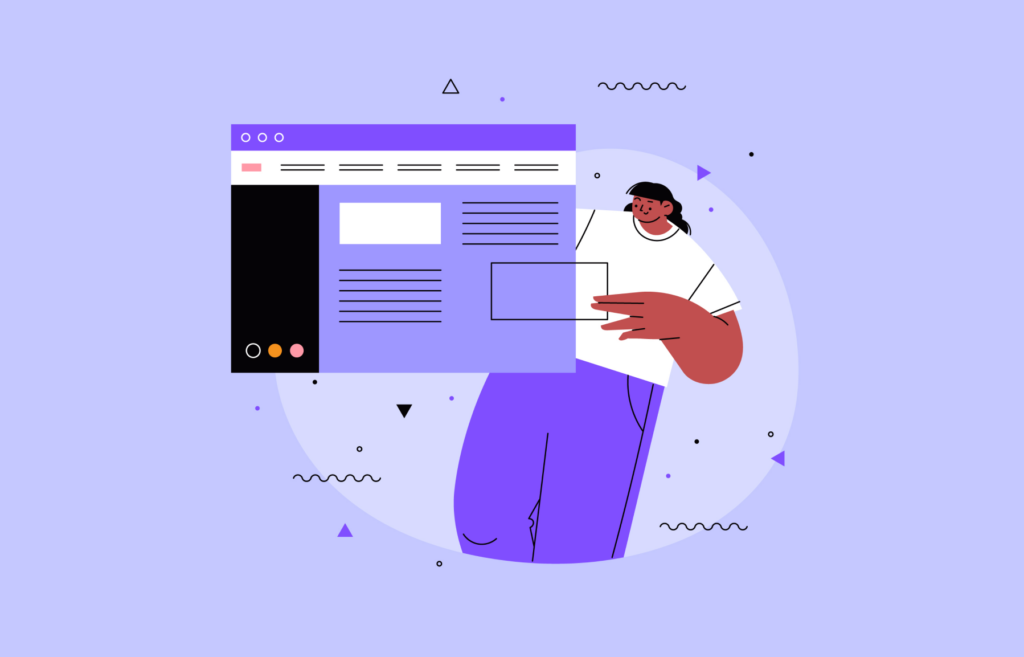What happens when your noindex tag isn’t working? Instead of hiding a page that you didn’t want to show up in a search, it’s one of the first pages people see. Yikes!
If a noindex tag is not used correctly, it can defeat its purpose (and now you’ve got tons of views on your least favorite blog post). So what’s the solution?
Well, first, let’s understand what a noindex tag is, and then we can learn why it’s important to make sure it’s working properly. Finally, we’ll explore a list of helpful solutions that you can try.
How The Noindex Tag Works
Search engine optimization (SEO) is a top priority if you’re looking to grow and maintain a healthy website. However, one often overlooked part that could ruin your ranking is incorrectly using the noindex tag.
But first, what is a noindex tag? Basically, it’s an HTML meta tag that tells a search engine crawler not to index a specific web page. It’s like running a library, where you decide which books go on the shelves and which books are hidden away (maybe that’s where the special copies go!).
Well, you can think of a noindex tag like the note you stick on a book that tells the librarians (in this case, the search engines) not to put that book on the shelf for everyone to see.
Similarly, when a website uses a noindex tag, it tells search engines not to show that webpage in their search results. This is a great way for website owners like yourself to decide which pages you want people to find when they search online and which ones you’d like to keep hidden.
When should you use noindex?
- To prevent private or sensitive pages from showing in search results, like login pages, checkout pages, or customer account info.
- Hiding duplicate content, like product pages, that are usually generated dynamically.
- To prevent lower-quality content from showing up first, like pages irrelevant to the website’s main content.
When shouldn’t you use noindex?
- When you want a page to appear in search results, like a landing page for your email list.
- If you are looking to take a permanent action, because you can actually remove these tags. (Which is pretty good news!)
- If you want to prevent pages from being cached by search engines. Noindex tags won’t do this for you – you’ll have to use the nocache meta tag.
Common Misuses
Unfortunately, using the noindex tag isn’t fail-safe – several errors can occur. Understanding what could happen if you don’t use the tag correctly and the impact is the first step before exploring best practices.
Blocking Important Pages
One of the biggest errors that can happen when incorrectly applying a noindex tag is blocking visibility to important pages that you want people to see, like product descriptions or service pages.
Noindexing Temporary Pages
Websites often create temporary pages for promotions, events, or testing. If you forget to remove the noindex tag from these pages, you might miss out on traffic, which could mean missed opportunities for exposure and engagement.
Blocking Canonicalized Pages
Canonicalization is a technique used to consolidate similar or duplicate content under a single URL. If you are implementing canonical tags, you want to make sure they are indexable. Why? Because applying a noindex tag could confuse search engine crawlers, making the main content harder to find.
Results of Improper Noindex Tags
If noindex tags go unchecked or continue to be misused, the long-term effects on your website can be damaging to your SEO. Here are some of them:
Loss of Organic Traffic: By keeping important pages from search engine indexes, your website is at risk of losing organic traffic and visibility. This can affect conversions, leads, and even sales.
Impaired Crawling and Indexing: If noindex tags are incorrect, they can confuse search engine crawlers. Consequently, they cannot crawl and index relevant content, preventing new pages from being discovered and ranked.
Negative User Experience: If someone visiting your website reaches a random dead end or incomplete search results, this can ruin your reputation. You might experience increased bounce rates and lower engagement.
Long-term SEO Damage: Repairing the effects of improper noindex tag usage is time-consuming. Your website’s ranking could have already suffered even after making the necessary fixes.
Best Practices for Noindex Tag Implementation
So, how do you avoid falling into the trap of improperly using noindex tags? Well, we’ve rounded up a few best practices.
1. Try Clairiti
At the top of our list is Clariti’s “Robot Meta Tag” feature, which helps to ensure that your website’s robots.txt file is configured correctly. Often, if there’s a conflict between the robotx.txt and noindex tags, whole website sections might be blocked, impacting indexing and visibility. Here’s Clariti’s guide on how to use the Robot Meta Tag feature.
2. Audit, Audit, Audit
Reviewing your website’s meta robot tags is a good practice to ensure they align with your SEO strategy and goals. If there are incorrect noindex tags, this step will allow you to address them right away. You can even use an SEO tool like Moz Pro or SEMrush to identify pages with noindex tags and receive a report highlighting potential problems.
Before making changes to meta tags, consider conducting a thorough test. Monitor the impact on crawling and indexing behavior and adjust accordingly.
4. Use Google Search Console
Try using tools such as Google Search Console to monitor index coverage and get notifications of potential issues with meta tags. You can also use their “Excluded” report to review index status reports regularly, see all excluded pages, and make sure they are supposed to be noindexed.
Even a minor oversight, like improperly using a noindex tag, can really hurt your SEO ranking. By knowing the ins and outs of noindex tags and best practices, you can safeguard against losing visibility and traffic on your website.
Checking and preventing noindex tags might require more attention to detail and proactive monitoring, but the results are definitely worth it.



